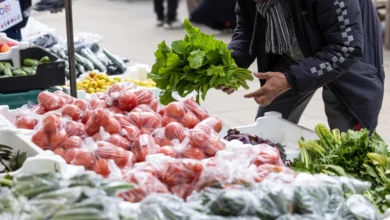
Asia is losing some of its appetite for rice in favor of wheat, a trend that is nowhere more pronounced than South Korea where bread and pastries have become a new staple.
From working mothers, who find toast more convenient to prepare for breakfast, to city dwellers flocking to new eateries for baguettes, South Koreans are at the forefront of an Asia-wide trend that has seen wheat demand climb at nearly twice the rate of rice consumption since 2008.
And while Asia is largely self sufficient in rice, demand for bread and noodles from Mumbai to Manila has made Asia the largest and fastest growing market for wheat imports, shipping in more than 40 million tons annually for the past five years or 25 percent of world imports.
"I eat bread with coffee almost every morning," said Lee Seung-Hee, a 47-year-old working mother of two, who often gives her children bread as a snack between meals.
"My husband likes to have rice meals, so I try to cook rice for him. But when I'm too busy, I just give him bread."
South Koreans spent an estimated 6.36 trillion won (US$5.37 billion) last year on bread, sandwiches, bagels and pastries, according to SPC Group, owner of the Paris Croissant and Paris Baguette chains, which has even opened two stores in the French capital Paris as part of global expansion.
Meanwhile, South Korea's rice consumption hit a record low of 65.1 kg per person last year, while flour consumption was the highest since 2006 at 33.6 kg, according to industry and official data.
"Housewives are increasingly having bread and coffee for brunch late morning instead of rice and kimchi," said Kang Byung-Oh, a business professor at Chung-Ang University, referring to the spicy local side dish.
SPC Group, which runs Asia's biggest bread making plant and has about 5,000 bakeries in South Korea, said the local bread market has grown at an average of 15 percent per year since 2005.
"You can find this trend across Asia, as Asian countries become westernized…Food products from wheat flour are quick, convenient," said Koh Hee-Jong, an agriculture and life science professor at Seoul National University.
Noodles
Rising wheat consumption has been focused on large cities where an emerging middle class is exposed to a proliferation of convenience foods from pizzas to sandwiches.
In Indonesia, noodle consumption has helped increase wheat demand in the world's second-biggest importer by more than 60 percent since 2005 to nearly 8 million tonnes annually.
Even in India, the world's second-largest wheat grower, consumption is projected to surpass output by more than 5 million tons this year, sparking the largest imports in eight years.




